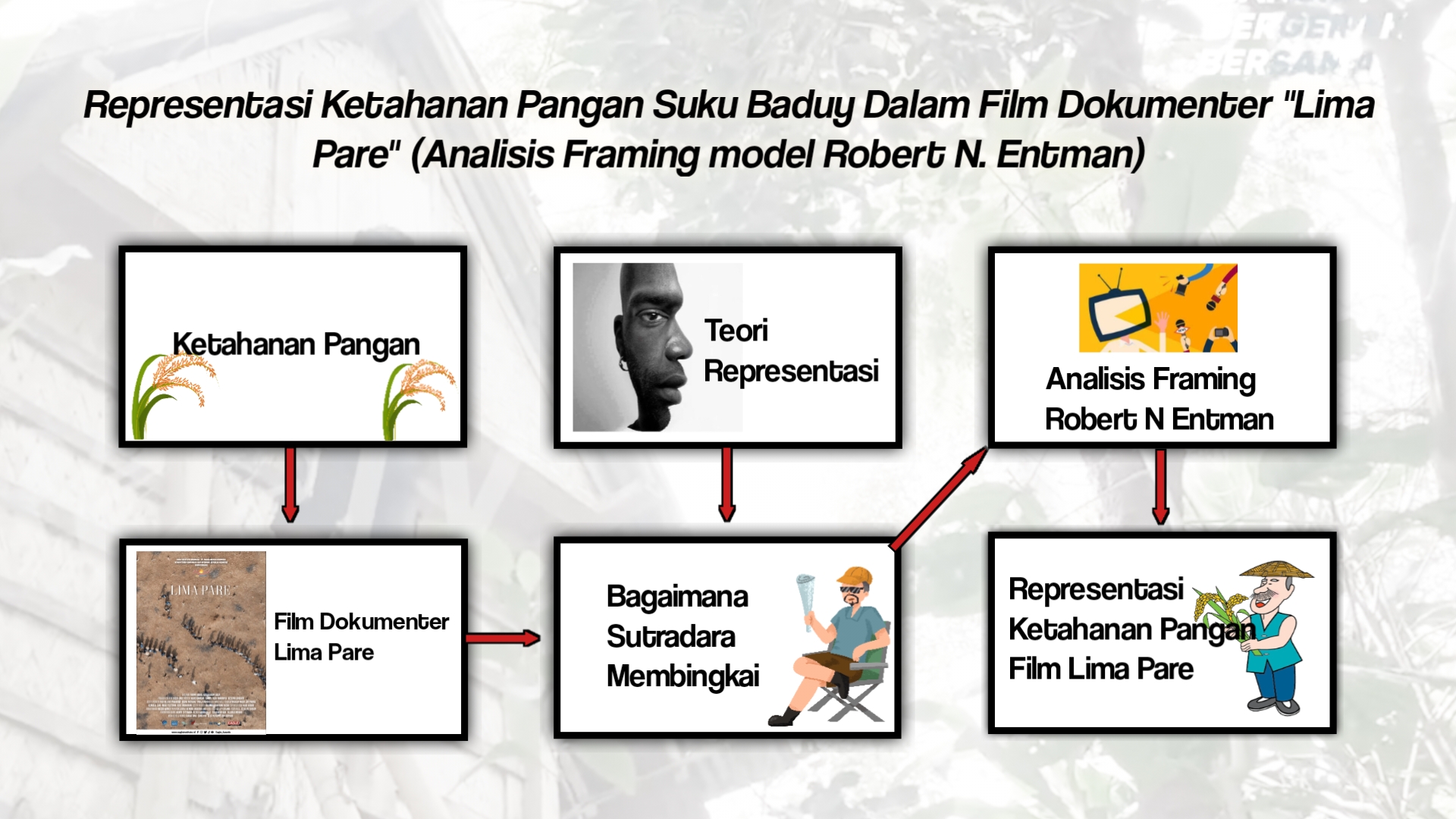REPRESENTASI KETAHANAN PANGAN DALAM FILM DOKUMENTER “LIMA PARE” (ANALISIS FRAMING MODEL ROBERT N. ENTMAN).
Keywords:
Representasi Ketahanan Pangan, Analisi Framing, Film DokumenterAbstract
This research explores food security within the Baduy tribe, framed through the documentary film "Lima Pare." The research questionaddresses how the documentary film "Lima Pare" portrays/frames food security in the Baduy tribe, as analyzed through Robert N. Entman's framing analysis. The study aims to analyze how food security in the documentary film "Lima Pare" is depicted or framed based on Robert N. Entman's framing analysis. The research utilizes the textual analysis of media framing, employing Robert N. Entman's model with four analytical elements: Define Problem, Diagnoses Causes, Make Moral Judgement, and Treatment Recommendation. The research adopts a constructivist approach.The findings indicate that the film "Lima Pare" features scenes representing food security in accordance with the Republic of Indonesia Law Number 18 of 2012. Analyzing through Robert N. Entman's framing, it is evident that, through traditional farming practices and natural resource management, the Baduy tribe has efficiently created a food system. Farming for them is not just a regular agricultural activity or a means to fulfill physical needs but is also a form of worship. The proposed solution to maintaining food security involves preserving local wisdom, particularly the leuit system (granary).
Recommendations for future research include further developing this study for a deeper understanding. Thus, future findings can be more comprehensive, especially within the context of food security in the Baduy tribe

